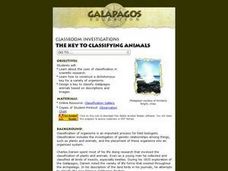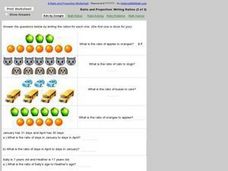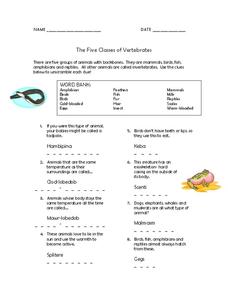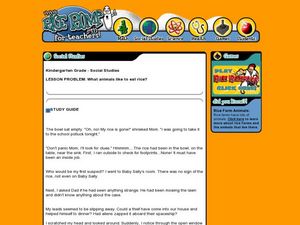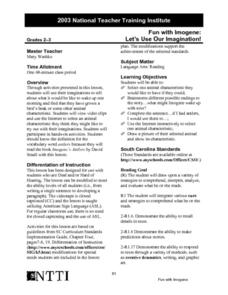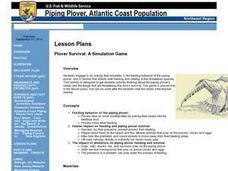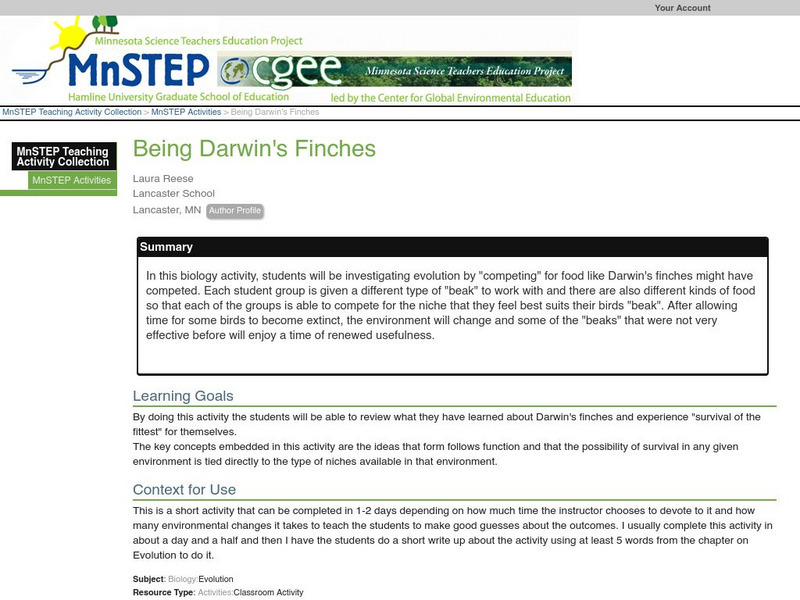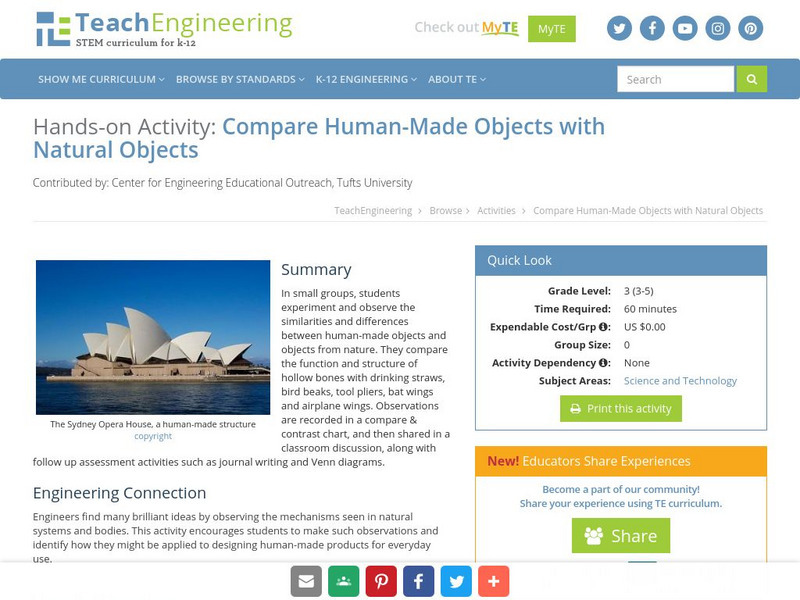Curated OER
The Key To Classifying Animals
Explorers of the environment construct a dichotomous key for a variety of organisms and design a key to classify Galapagos animals based on descriptions and images. The lesson includes a link to an animal gallery and the worksheet for...
Curated OER
The Great Pollinators
Students discover the reproductive parts of a plant. In this biology lesson, students identify and categorize several different plants they dissect in class. Students record their information using a data chart.
Curated OER
Introduction to Adaptation
Tenth graders observe collections of specimens and discuss their answers to provided questions. They explore common ancestry, homology, analogy, adaptive radiation, and evolution, while formulating creative answers based on their...
Curated OER
Wetland Ecosystems: Non-living and Living Components and Brine Shrimp
Learners explore wetland ecosystems. In this wetland lesson, students discuss and observe salt ponds and the organisms that live there. They explain how abiotic and biotic factors of species are important to survival.
Helping with Math
Ratio and Proportion: Writing Ratios (2 of 2)
Elementary and middle schoolers use pictures to figure out simple ratios and complete ratio word problems. An example is done for learners in which three apples and seven oranges are displayed. The answer simply is a ratio of 3:7. The...
Curated OER
A Newspaper?
Sixth graders use newspapers to investigate fractions. They work in small groups to categorize articles, measure them with the grid transparency, and calculate the values represented. Afterward, they write a reflective essay on the role...
Curated OER
The Five Classes of Vertebrates
In this vertebrates classification instructional activity, 5th graders unscramble 15 words to find answers to clues. Each clue gives information about the characteristics of vertebrates.
Curated OER
Discovering Owls
Students are introduced to different types of owls and owl pellets. They list several adaptations that benefit the owls. Students identify the various species of owl that live in Wisconsin. Students discuss owl pellets and identify the...
Curated OER
Tundra Swan Fun Facts
Students read about the characteristics of tundra swan. In this tundra swan lesson, students understand the characteristics of the tundra swan and complete worksheets related to the tundra swan.
Helping with Math
Ratio and Proportion: Writing Ratios (1 of 2)
Here is the first of two printable ratio worksheets. For the first three problems, pupils count the numbers of two different objects and simply write down the ratios. There are then four problems in word form for which they also write...
Curated OER
Animals who eat Rice
Students read a story and answer questions. In this reading for understanding lesson, students read a story and answer questions. Students also draw pictures of the story to help comprehension.
Curated OER
Inexpensive Marrionette Puppet
Students follow directions to create a marionette puppet using Styrofoam balls, fishing line and feathers. They practice making it walk, dance, eat, sit, and walk backwards.
Curated OER
Fun With Imogene: Let's Use Our Imagination!
Students research animal characteristics and use their imaginations to tell about what it would be like to wake up one morning and find that they have some animal characteristic. They read Imogene's Antlers by David Small.
Curated OER
Who Am I? - Locomotor Skills
Students discuss the meaning of the word locomotion and the different ways that they use locomotor skills.
Curated OER
Rainforest Introduction
First graders create parrots and butterflies by using art materials to introduce them to rainforest animals. In this art lesson plan, 1st graders then use these animals to create a class rainforest.
Curated OER
A Newspaper?
Sixth graders reinforce understanding of fractions through use of newspapers.
Curated OER
Penguin Paradise
Students read about penguins and communicate their information in a one paragraph summary. In this penguin writing instructional activity, students review sentence construction. Students complete a KWL about penguins and read the book...
Curated OER
Plover Survival: A Simulation Game
Seventh graders engage in a simulation that explains the feeding behavior of the piping plover and the things that disturb the feeding and nesting of this species.
Curated OER
Dancing Flamingos
Students, through the media of dance and drama, discover how an animal's behavior helps them to survive in the environment. They practice performing or mimicking how a flamingo's acts and positions itself when being observed. The...
Curated OER
Mazes
In this mazes worksheet, students determine the best path in a maze to help a turn stone find some lunch. Students share their paths with their classmates.
Smithsonian Institution
Smithsonian Learning Lab: Looking at Bird Beaks
Use this activity as an introduction to adaptations. Students will view video clips of birds and formulate their own observations and explanations for the different types of bird beaks and how they are used.
Science Education Resource Center at Carleton College
Serc: Being Darwin's Finches
For this biology activity, learners will be investigating evolution by "competing" for food like Darwin's finches might have competed. Each student group is given a different type of "beak" to work with and there are also different kinds...
TeachEngineering
Teach Engineering: Compare Human Made Objects With Natural Objects
In small groups, students will experiment and observe the similarities and differences between human-made objects and nature. The students will compare the function and structure of hollow bones with drinking straws, bird beaks, tool...


